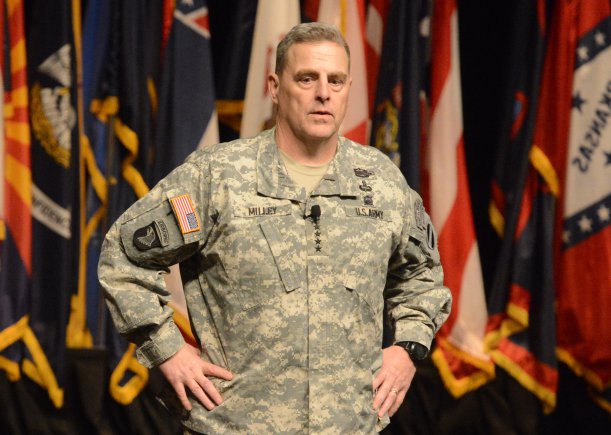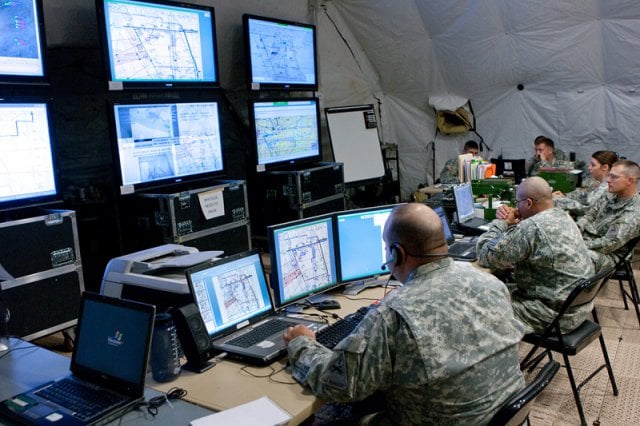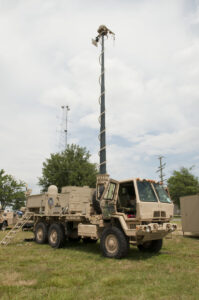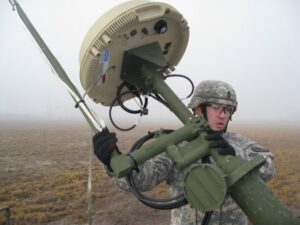By SYDNEY J. FREEDBERG JR.
Gen. Mark Milley
 ARLINGTON: Want to sell information technology to the US Army? Then you need to write this down: Paul.A.Ostrowski.mil@mail.mil. That’s the email of the generalseeking industry’s input — historically something of a struggle for the service — as the Army reviews and overhauls its networks.
ARLINGTON: Want to sell information technology to the US Army? Then you need to write this down: Paul.A.Ostrowski.mil@mail.mil. That’s the email of the generalseeking industry’s input — historically something of a struggle for the service — as the Army reviews and overhauls its networks.
The Army’s long-term goal: a single unified network connecting everything from the home base to the battlefield, easy for the service to upgrade, easy for soldiers to use amidst the stress of combat, and hard for enemies to take down. The Army’s immediate question for industry: Can you build it?
An Army soldier sets up a highband antenna.
Lt. Gen. Ostrowski, the director of the Army Acquisition Corps, wants you to write him if you want in on a series of roundtables the Army is holding with selected companies, hosted by the federally funded Institute for Defense Analyses (IDA). One roundtable was personally led by the Army Chief of Staff, the hard-charging, wisecracking Gen. Mark Milley, who is taking a hands-on role in the review he launched in May.
“Who’s in charge? The Chief’s in charge…. he and the Secretary of the Army,” Ostrowski said at yesterday’s Association of the US Army conference on networks. Those top leaders have brought together the Army’s Chief Information Officer/G-6(chief signals officer), the Army resourcing staff (G-8), the Training & Doctrine Command that brainstorms future warfare concepts and writes requirements for new systems, and the acquisition officials who buy them.
“What’s different is the involvement of the leadership,” said Army CIO Gary Wang, who’s leading the review for Gen. Milley. While the Pentagon bureaucracy does plenty of reviews, he told me, “oftentimes it’s delegated down to a much lower level.” This time, though, the severity of the Army’s “financial constraints” have gotten the Chief of Staff and Acting Army Secretary Robert Speer personally involved, Wang said.
There’s another reason Wang didn’t mention: the savage criticism in Congress of the Army’s flagship battlefield network, WIN-T. Gen. Milley himself said the network is too “fragile” and “vulnerable” for future battles against high-tech adversaries like Russia or China, because its transmissions are too easily detected and then jammed or hacked.

Army command post
Beyond WIN-T
“WIN-T’s our current network,” Ostrowski said when I asked him about the system. “We’re an Army that has to fight tonight, and WIN-T will be very much part of that. Period. That gets that off the table.” Then he moved on to other topics — notably not saying what this review would mean for WIN-T in the future.
Army WIN-T Tactical Communications Node.
 But this review goes well beyond WIN-T, Milley and Speer have emphasized. It covers all the Army’s networks, both for combat units and back-office business operations. The crucial issue, Ostrowski said, is “how do we simplify the network? Right now we have a lot of parts and pieces. We’ve gone out and bought a lot of stuff that’s incredible in terms of its capabilities. but we’ve got to simplify: We’ve got to make this soldier-intuitive; we’ve got to make it soldier-maintainable and soldier-operable.”
But this review goes well beyond WIN-T, Milley and Speer have emphasized. It covers all the Army’s networks, both for combat units and back-office business operations. The crucial issue, Ostrowski said, is “how do we simplify the network? Right now we have a lot of parts and pieces. We’ve gone out and bought a lot of stuff that’s incredible in terms of its capabilities. but we’ve got to simplify: We’ve got to make this soldier-intuitive; we’ve got to make it soldier-maintainable and soldier-operable.”
No comments:
Post a Comment